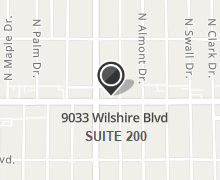Patients have been calling my office for information regarding the removal of Allergan’s Biocell textured implants from the United States market, so I want to take this opportunity to help you understand the reasons behind this removal and the concerns you should, or should not, have about it.
Breast implants have two types of surface, smooth and textured. All smooth implants are round. Most round implants placed in the United States, and in my practice, are smooth-surfaced. All shaped implants are textured, so if you have a shaped implant it will have a textured surface. What is a textured surface? You can think of it as similar to Velcro. This raises the question, “Why would anyone want a Velcro surface on their breast implant?”
There are several reasons. First, some women need an implant with a shape to it, due their unique anatomy. These implants have a teardrop shape. The only way to manufacture a shaped implant is to have a textured surface. If your unique situation requires a shaped implant, your implant has a textured surface. The second reason for a textured surface has to do with something called capsular contracture. Capsular contracture, also known as CC, refers to scar buildup around an implant. For earlier generations of breast implants, this was a significant issue. Research demonstrated that a textured surface implant, whether round or shaped, was less likely to get capsular contracture. As implant technology has progressed, capsular contracture has diminished as an issue, but remains one of the more common problems after breast augmentation or reconstruction. As its incidence has diminished, the demand for textured implants in the United States has declined as well. The result of this is that the number of textured surface implants placed in the United States is in the minority of implants. But it is very reasonable for you to be aware of the type of implant surface your implant has. The best way to find out is to call your surgeon and ask.
What is the issue with textured implants and cancer? The concern raised by textured surface implants is the development of a condition known as BIA-ALCL. This stands for breast implant associated anaplastic large cell lymphoma. It is not a true cancer but a condition related to lymphoma. It presents with swelling of the affected breast, usually long after the implant has been placed. The swelling may be painless. There may be fever, but more commonly there are no other associated symptoms. If you have swelling of one or both of your breasts some time after your surgery, you should see your surgeon for evaluation.
The evaluation may include an ultrasound to help characterize the swelling. In addition, the fluid should be removed and tested for a certain protein (known as CD-30). If that protein is in the fluid, you will need surgery to remove the implant and the implant capsule, which is your tissue that surrounds the device. If caught in the early stages, this procedure will cure the condition and no other treatment is needed.
In rare cases, other treatment may be needed. But it is important to remember that millions of women in the world have had breast implants placed and there are only about 600 cases of BIA-ALCL that have been reported to date.
Another important fact is that not all textured implants are alike. There are three major implant companies in the United States. These are Allergan, Mentor, and Sientra. They each make textured implants, but the method they use to texture the implant surface differs with each company. At present, Allergan’s Biocell surface is most associated with BIA-ALCL. If your implants are textured and from one of the other manufacturers, you should speak with your surgeon about going forward. At present there is no reason to remove any textured implant. But all patients with textured implants should be aware that any change, including sudden swelling, needs to be evaluated by your surgeon.
So what should you do?
If you have a smooth surface implant, there is no reason for concern. There are no reported cases of BIA-ALCL in smooth surface implants. You should certainly monitor your breasts for any changes and follow your prescribed routine for breast cancer screening. Your plastic surgeon is always available to perform and examination and guidance.
If you have textured implants, the current recommendation from the US Food and Drug Administration is to leave your implants in place if you have no symptoms. If you develop a fluid collection around your implant, or a sudden onset of swelling, you should see your surgeon for evaluation. I have seen two patients in the past several years with late onset of fluid around their implants. Both of these patients were investigated with ultrasound and fluid removal, along with analysis of the fluid. Neither of these patients had BIA-ALCL. In fact, one of these patients was the subject of an article in the medical journal Cytopathology (FNA of peri-implant seroma of the breast by Hatem, J., Tobey, J., Solomon, M.P., and Yu, G.H. Feb. 2018) to describe the appearance of the fluid in cases that are not BIA-ALCL. This will help other cytopathologists to distinguish those cases that do not have BIA-ALCL from those that do.
If you have textured implants, you should feel free to contact your surgeon for a discussion and evaluation. Your surgeon is best able to guide you and answer your concerns. My patients have already been contacting me. Most require continued monitoring. Some may wish to examine other options including implant removal, capsule removal, and placement of new implants. This is an individual decision for each patient and one that I am happy to guide them through. I expect few of my patients to undergo implant removal. I have already been vigilant about this problem for my patients and plan to continue to help them in any way possible.
The take away message from this blog is that if you have smooth surfaced implants, whether saline or silicone filled, BIA-ALCL is not an issue for you. If you have textured surface implants, you should contact your surgeon and be aware that any change in your breast, such as sudden swelling, will need an evaluation by your surgeon.
Breast Augmentation
by Dr. Heather
Apr 5,2021
Category: reviewsHello! Ok, let me start by saying that Dr. Solomon is THE BEST. The reason I stand behind 5 stars is simple. I received a breast Augmentation 17 years ago and everything went beyond well. Not only did my breast look fabulous they still look fabulous after 17 years. I just left his offices for my 2nd check up in the past 17 years and they look and feel like they did when they were new. Not only did the check up cost ZERO dollars the but the cander and expertise are priceless. Look no further. Dr. Solomon is extremely honest and won't do anything that won't be perfect. Thanks DOC you Rock!
Powered by Crystal Clear Digital Marketing Reviews




